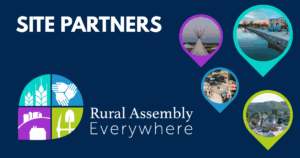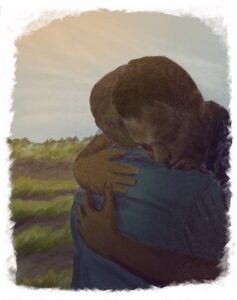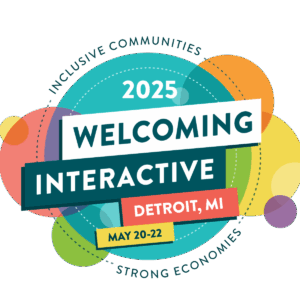Thank you to everyone sho shared their stories on broadband access in your rural community. We have shared your stories with Broadband Connects America, a coalition representing the voice of rural America in the fight for affordable broadband and connectivity, who will be sending stories and information to the Federal Communications Commission (FCC), letting them know that many across the country do not have broadband access or fast enough speeds. We have shared some of the stories we received from across the country below. Thank you for joining the fight for broadband access for all.
Frances, Liberty, Indiana
I moved to a rural area in East Central Indiana from a major city in Northwest Indiana. I hadn’t thought to check about Internet access in 2002 and found the lack inconvenient (had to be on campus to teach online, couldn’t stream media, etc.) but I certainly couldn’t imagine no improvements 18 years later and here we are, needing to work and educate from home and it’s not possible. We pay Hughesnet $160/month and can’t even connect to Zoom meetings with video or access short educational videos. I work at a regional campus of a major university and they had strict rules of who could be on campus during the Pandemic, so from March – July I was extremely limited in what I could accomplish for work from home. There would be so many opportunities for business, work and education options if we could only get sufficient speed connections from where we are and want to live!
William, Brooksville, Maine
We’re in Brooksville that is alleged to have 10/1 DSL internet service. We have never been close to those numbers. Indeed, on some days we must reboot our router a dozen of times to have any internet service at all. I am on a number of Boards and they have all switched to “Zoom” meetings. It is embarrassing, dysfunctional and time consuming for all when I need to ask other members to back up because my screen and audio has frozen for an extended period (frequently coupled with a pop-up message that says, “Your internet connection is unstable.”) To exist in today’s technological world we need more reliable and faster internet service.
Linda, St. Charles, Minnesota
When I moved from the metro to rural MN in 2018 I found that my cell phone received no signal in my apartment, If I stood stock still with my chin pointed toward the north pole and yelled ~ maybe, but not after 3-4 mins. Every call cut out even after yelling and pointing chin. So at 70 years of age I was living with nearly no communication, especially in winter in MN. The building is older, cement walls thicker and maybe no towers hereabouts. I had to go to my car and make phone calls for two years before I was able to afford a landline. Even then the cable companies were unable to set up an account and I am saying for wifi now, not cable tv or high speed internet. Just high school student/grannies with low income WIFI. Luckily there are a few programs in the area for people of extremely low income. I am limping along now but this is not a normal level of service or connectivity. It leaves me as rural person in a communication gap. That gap needs fixed and has for quite some time. Oh and the companies who do serve here offer a cheaper plan and that has long distance by the minute charging and no features. So these companies clearly do not “care” about access or people. They care about money and their own profit. Not keeping our junior high and highschool, and really all citizens accessible to internet during Covid is not luxury – it is a necessity – unless we want our rural children to become adults who are not even in touch with the real world.
Allie, Lola, Kansas
As an employee of Thrive Allen County, the largest and most prominent rural health advocacy organization in Kansas, our team makes has been making an effort (pre-Coronavirus) to show up in each of our communities (yes, even the one’s of 13 people!) and engage in what we call a “community conversation.” These discussions allow residents to tell us directly what they thought would make their county a healthier place to learn, work and play. We heard a variety of answers — the most common being the need for medicaid expansion, better infrastructure, and, of course, broadband. The townsfolk of Savonburg, Kansas (population 81 according to 2017 Census data) informed us that in order to make a phone call, whether it be recreationally or for emergency services, they have to visit their local cemetery — the only location in their community where cell phones receive a signal from a neighboring cell tower. Multiple townsfolk recounted how terrifying it was to make an emergency call in such an ironic and haunted place whilst they thought their lives were in jeopardy. Additionally, there is a large portion of their population over the age of 60, making it extremely difficult to get outside of their homes without assistance in order to make calls at the previously mentioned cemetery — especially in the winter months.
Thomas, Brooksville, Maine
My family have not had reliable broadband since we moved here 22 years ago. We now have an account with Consolidated, but even after two upgrades, the download speed is not reliable enough to assure a stable connection. Zoom meetings, for example, regularly freeze, and pages pretty much never load quickly. That’s ok sometimes, but I work remotely and spend most of my day on the computer, so those five- and ten-second delays add up to a lot of frustration. My daugher’s school work suffers, too. On occasion–every month or so–the connection stops completely, and CC has to send a technician out to investigate. They do a good job with customer relations (prompt and courteous), but the breakdowns are frequent enough to constitute another headache. When they do occur, they go on for a week or more. The upshot is that my service is adequate but nowhere near what we want, which is stable, reliable, fast service.








